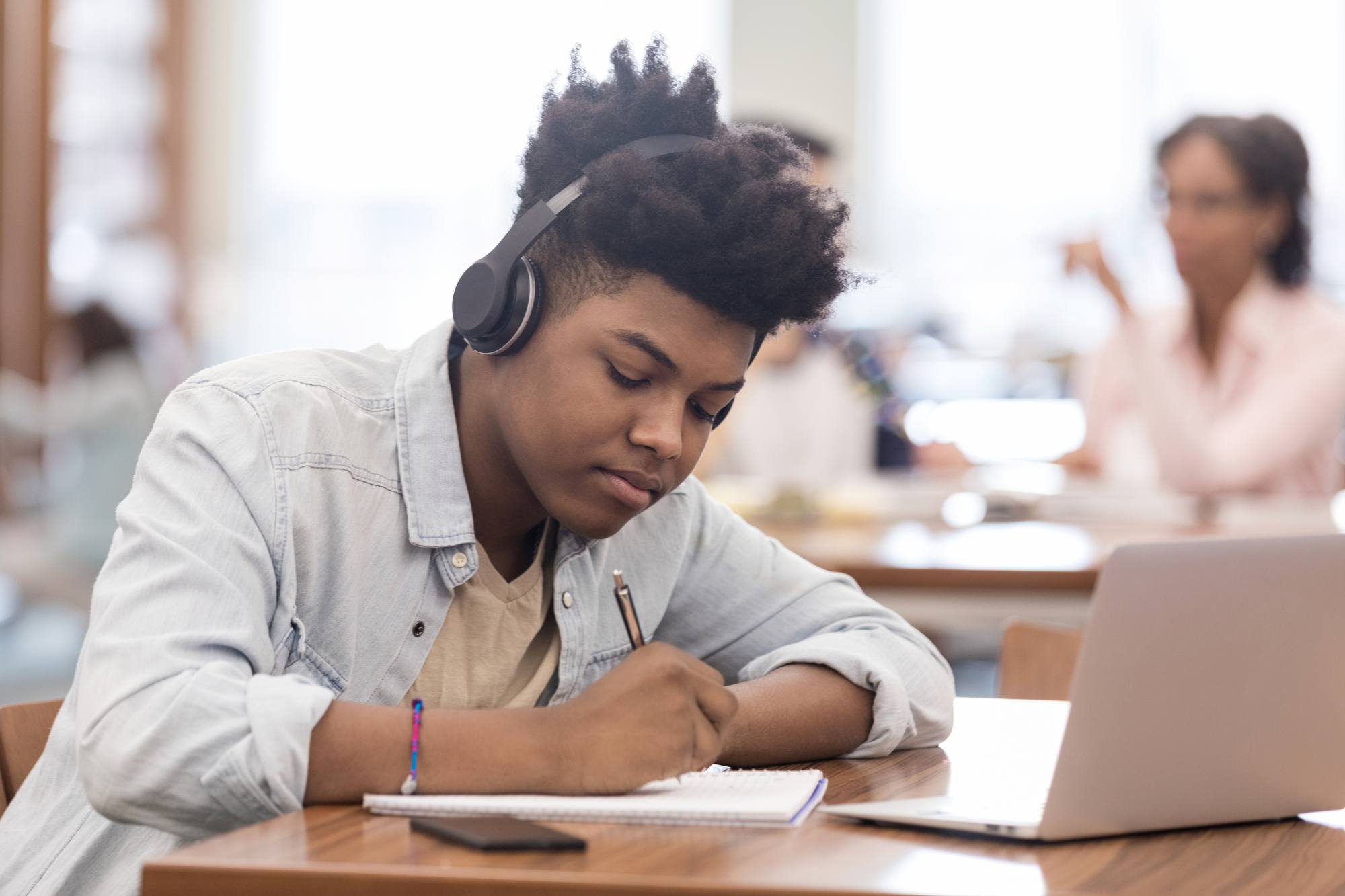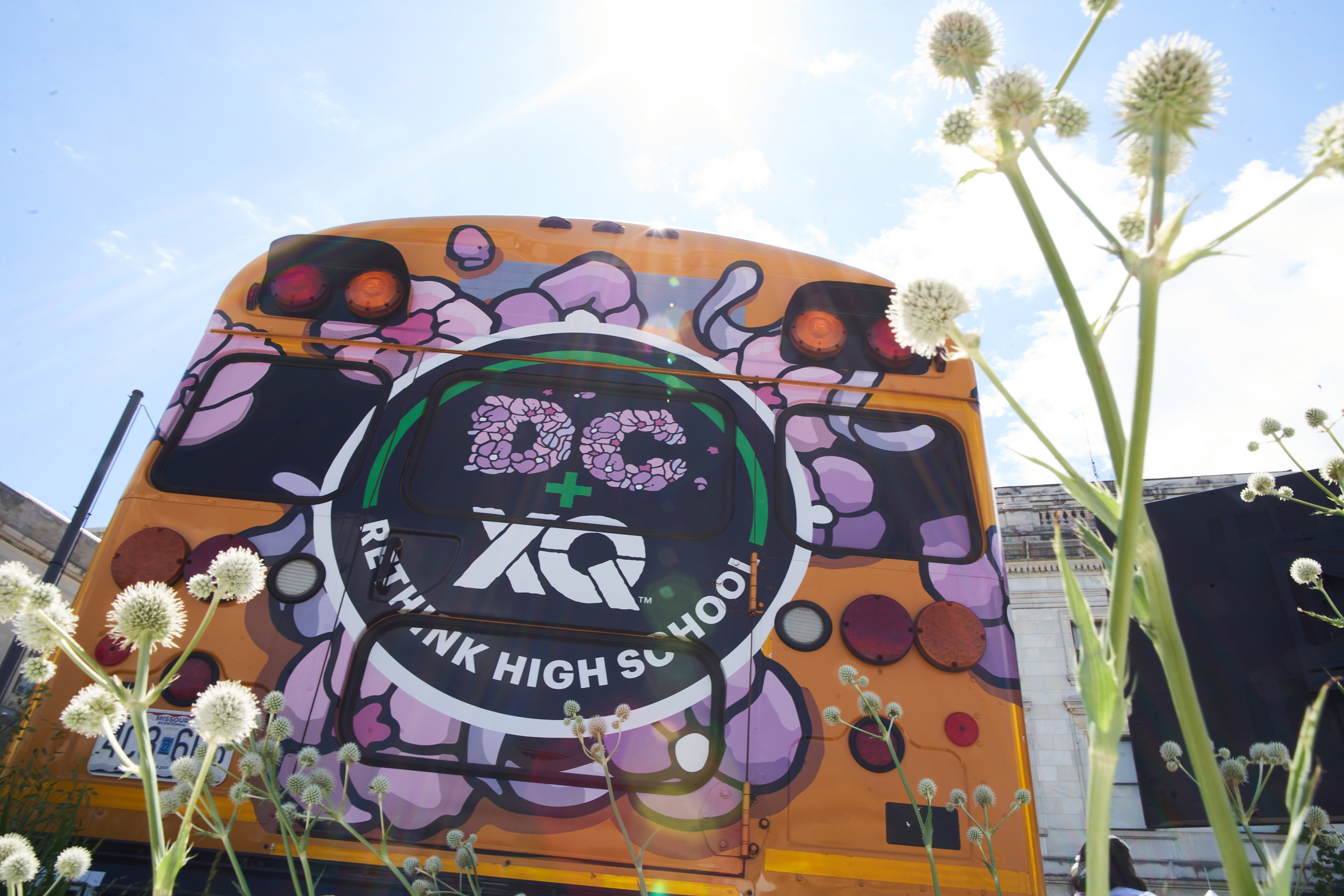A Holistic Approach to Teaching Black History Year-Round
Black history needs to be taught year-round and holistically. We spoke to educators across the country about the importance of representation in the curriculum.

We teach American history year-round. More than that, we teach American history year-round and in multiple disciplines. We might teach students about the Manhattan Project in a science lesson on atomic fission. Maybe, we’ll include a lesson on the Dust Bowl during an English class’s reading of “East of Eden” by John Steinbeck. No matter what time of year or subject, history is always present in the classroom.
However, when we choose to teach canonical American history, we teach a very specific history: The history of White settlers, presidents, “forefathers”—a Eurocentric history that inevitably excludes other cultures’ stories. If we do teach the histories of diverse populations, we often confine their history to a specific cultural heritage month, likeBlack History Month.
Black History Month was first proposed by Black educators and the Black United Students at Kent State University in 1969. President Gerald Ford officially recognizedBlack History Month in 1976, but this was only the first small step in diversifying American curriculum. Nearly half a century later, America is still admist crises and racial reckonings that demand us to acknowledge Black history is American history, and it should be an integrated part of every student’s historical understanding.
What Representation Represents in the Classroom
Black history-makers’ contributions span across a wide range of subjects, from the music we listen to and the books we read, to movements for equal rights and the laws that govern America. It’s important to reflect upon and teach the true magnitude and pervasiveness of Black people’s influence on our past and present.
By containing Black history—and Black achievement—to one month, what are we missing? What do we leave out, and inevitably erase, when we simplify Black history to these four weeks? Are we doing a disservice to our students by giving them only 28 days to learn about revolutionary figures? More importantly, do we hurt progress towards racial equity by not infusing Black history into our curriculum beyond February?
It’s easy to come to the conclusion that, yes, we limit our students by limiting their understanding of the rich and resilient history of Black Americans. However, it is much harder to find long lasting solutions to include this history year-round. Is it enough to proactively review curricula before school begins to ensure that all BIPOC voices are represented in our syllabi? Surely, we know that there is a history that sits in opposition to the White dominated history that we learn about for 11 months out of the year.
Connecting Black History to Systemic Inequities
As we explore these questions, it’s now mission-critical that we find long-lasting solutions to authentically teach Black history year-round. We need to move beyond merely ensuring BIPOC voices are represented in our syllabi—and ensure that these voices are heard and recognized in all that we teach, year-round.
When Michelle Moehlmann, an educator from Chicago, Illinois, began teaching, she quickly learned the disempowering effects that a lack of representation can have on students. “When I started teaching, I taught White-centric classics. As a result, my students never saw themselves as powerful storytellers,” explains Moehlmann. “They disconnected from the curriculum and we lost the chance to have meaningful discussions in our classroom.”
Moehlmann’s fix? Finding Black literature that resonates with her students, a change that she says caused her students to become “completely different learners.” From this experience, Moehlmann resolves: “Students believe what we tell them. If we tell them, implicitly, that their voices and experiences are not valid or important, they believe us. We have a responsibility to our students to create a learning environment where all human experiences are allowed to add value.”
The need to teach the histories of historically underrepresented communities goes beyond empowering students of color. Educating all students on Black history through an intersectional lens is pivotal in creating a new generation ready to look at each other with empathy and inclusion. By omitting peoples, cultures, and histories from the content taught in classrooms, educators participate in systems of injustice. “When students grow up, we get angry that they are prejudiced—that they are problematic. The truth is that we fostered these beliefs,” explains Moehlmann.
Teaching Black History Leads to Stronger Student Engagement
Educators know that when students feel connected to the content in their curricula they are more likely to engage with the material. Representation makes learning more real. It allows students to find their voices and advocate for causes that speak to their interests.
For instance, student Hannah Flores explains that representation sparked her to partake in events outside of school to help uplift Black history through work for the Canadian Black History Month initiative. “I have been creating poems and films to express myself and amplify other Black-identifying artists,” explains Flores.
Check Out Hannah’s video on XQ’s Instagram here.
In describing how we can continue to celebrate Black history beyond February, Flores states, “Featuring Black people from the past and present would help to give more context and a full-circle experience of trail-blazers. Showcasing talent and work ethic across all industries will help to honor those who came before us, and give a platform to those who are continuing to make a difference in their respective fields.”
Flores’ words remind us of how important it is for budding youth leaders to be able to see themselves in history-makers past and present. When they see exemplars of success and pioneers of change that look like them, students are given a goal to strive towards—one they feel encouraged to achieve, as they’ve seen living proof that it’s attainable.
The Challenges Educators Face in Incorporating Cultural Diversity in the Classroom
One barrier to including Black history into public education comes from a lack of resources (XQ curated a list of resources last year) and support of culturally relevant teaching practices. We know that it is hard to create the needed adjustments to a curriculum’s scope, sequence, and learning objectives, and that oftentimes educators don’t have the resources or time to diversify the curriculum in ways that are gentle and careful, and culturally appropriate.
“It’s hard to include Black history organically, since the focus of education is so White-centric,” explains Moehlmann. The centrality of Whiteness in our curriculum and education makes infusing Black history into curricula even more arduous with Black-centric celebrations relegated to the sidelines. For instance, Moehlmann learned about Juneteenth from an update to the national calendar. “My ignorance of Juneteenth is a pretty solid argument for a need for more diverse education,”explains Moehlmann. “Our students don’t have access to information that relates to their identities and their heritage in their schools.”
The Limits Cultural Heritage Months Place on Truly Celebrating Cultural Diversity
Similarly, Jennifer Trevino, an educator based out of Houston, Texas, grapples with the limits that cultural heritage months place on discussions of the nuances of race in America. “In the Afro-Latinx community there is a lack of understanding of ancestry and colorism,” states Trevino. “I want to begin to create spaces for those conversations with students. Most Latinx identifying people don’t realize that there are Black people in Latin America,” Trevino states.
As Trevino explains, we do a disservice to our students of color by not educating them about the intersections that affect discussions on racism, such as colorism and ancestry. Trevino encourages her class to avoid looking at Black history as one collective homogenous experience, but rather, as a collection of heterogeneous experiences, all of which should be celebrated and recognized in their own light.
Intersectionality is a term coined by Kimberlé Crenshaw used to describe how race, gender, socio-economic status, etc. intersect to disadvantage particular communities.
How Can Educators Integrate Black History in their Curriculum Beyond February
As we look towards celebrating Black history in all of its completeness, we must also recognize that Black history is not uniform: people have multifaceted, complex, and ever-evolving identities that lend their way to unique experiences. It follows that celebrating Black history necessitates celebrating Black female history, and Black trans history, and any and all other intersections, which hold a multitude of equally important narratives.
Educators, regardless of zip code, ethnicity, and teaching experience, there are hundreds of ways to honor the contributions and history of Black Americans. Even if your school community may not reflect a Black minority or majority population, exposure to the perspectives of Black Americans and actively working to rid of the divides that separates Black and American history, makes space for empathy and a truly holistic understanding of America’s story.
To begin engaging students in this work and to help educators and students across America dive into the rich history of Black Americans, we’ve created an “unsung heroes” lesson plan—one that encourages students to learn more about little-known Black figures who have influenced sports, the economy, household security, and more.
Start Promoting Cultural Diversity in Your Classroom
We’re daring you to start here. Plant the seed for students to be guided by curiosity, to be intentional in their learning about Black history, and the change-makers that have shaped the course of history as we know it. You can dive into Driving Force Institute’s partner content with Untoldedu to find engaging videos that inspire students to look to recognize the unsung heroes in their communities.
What happens to a story if it is never told? What happens to a contribution that is never celebrated, appreciated or shared? We challenge you, we challenge your curriculum, and we challenge the narrative you provide to students: How will you make Black history, American history?
Share more in our “Discuss” section of Rethink Together. Share ideas with other educators and students around how you’re creatively changing the narrative to include the voices of Black Americans.









